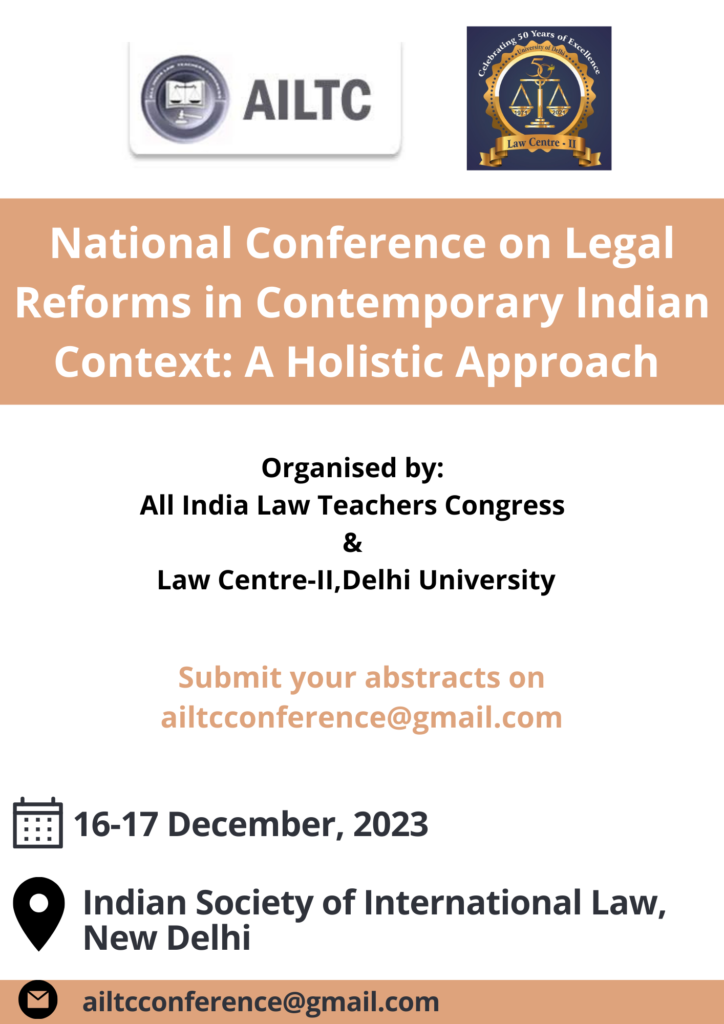Balasaheb Thackeray, a controversial yet charismatic political figure, left an indelible
mark on Indian politics, founding the influential Shiv Sena in Maharashtra. In this
three-part exploration, we delve into the life of Bal Thackeray, tracing the pivotal
events that led to Shiv Sena’s establishment and examining its trajectory under his
leadership amid the aftermath of the Babri Masjid demolition and Bombay riots. The
second section charts Shiv Sena’s journey until Bal Thackeray’s demise, while the
final part scrutinizes the party’s fall, revealing its ideological evolution and the 2022
internal rift that reshaped Shiv Sena’s leadership, marking a significant turning point
in its political landscape.
Bal Thackeray, born on January 23, 1926, faced early challenges following his mother’s
passing and financial constraints. His artistic talent secured a temporary position at the
Free Press Journal, leading to the co-founding of the newspaper Marmik with his
brother George Fernandes. Thackeray’s foray into journalism marked the initial steps
toward his influential political journey. Transforming a column on workplace inequality
into “Vacha ani Utha,” he championed Marathi self-determination, setting the stage for
the Shiv Sena’s inception in 1966.1
Thackeray’s political acumen played a pivotal role in Shiv Sena’s evolution. Initially
unaffiliated with the RSS, the party strategically expanded through “shakhas,” winning
42 Bombay wards in 1968. By 1970, Shiv Sena had transformed from grassroots origins
into a formidable political force, known for its ruthless tactics in neighborhood and
labor union activities. Thackeray’s divisive approach successfully united various castes
under the Sena’s flag, solidifying its influence.2 3 4 The Ayodhya dispute and the
subsequent Babri Masjid demolition in 1992 marked a turning point. Thackeray’s
alleged role in orchestrating anti-Muslim violence during the 1992-1993 riots led to
charges by the Justice B N Srikrishna Commission. Despite tensions and controversies,
1 Purandare, Vaibhav. Bal Thackeray and the Rise of Shiv Sena. Roli Books, 2013
2 Gupta, Dipankar. “The Shiv Sena Movement: Its Organization and Operation, Part One.” Social
Scientist, vol. 8, no. 10, 1980, pp. 22–37. JSTOR, https://doi.org/10.2307/3516641. Accessed 30 Sept.
2023.
3 Katzenstein, Mary F. “Origins of Nativism: The Emergence of Shiv Sena in Bombay.” Asian Survey,
vol. 13, no. 4, 1973, pp. 386–99. JSTOR, https://www.jstor.org/stable/2642928. Accessed 30 Sept.
2023.
4 TELTUMBDE, ANAND. “Bal Thackeray and Maharashtra’s Dalits.” Economic and Political
Weekly, vol. 47, no. 51, 2012, pp. 20–22. JSTOR, https://www.jstor.org/stable/23391153. Accessed 30
Sept. 2023.
Shiv Sena gained control of Maharashtra in 1995, showcasing its political resilience.1 2
Bal Thackeray’s later years were marked by conciliatory gestures, such as apologizing
for Shiv Sena’s actions, and controversial statements. His admiration for Adolf Hitler
and right-wing Hindutva ideology stirred criticism. Anti-Muslim rhetoric and disdain
for communism added to his polarizing image, making him a controversial figure in
Indian politics.3 4 5
The BJP and Shiv Sena formed a 39-year alliance in 1984, rooted in Hindutva.
Initially excluded by Sharad Pawar due to Maratha vote bank competition, they
presented a united front to Maharashtra voters, despite occasional rivalry signs.
Disagreements over power-sharing and leadership roles emerged in the 1990
assembly election and persisted through the 1999 election, where tough negotiations
led to a stalemate until Sharad Pawar allied with Congress. By 2014, they contested
separately, forming a government with strained relations. The 2019 alliance tensions
exposed ongoing competition for influence, voters, and power, interpreting the 50-50
formula.6 The formation of the Maharashtra Navanirman Sena (MNS) in 2006
marked a significant break from Shiv Sena by Raj Thackeray. Resigning from Shiv
Sena in December 2005, Raj outlined MNS’s positions on Hindutva and Maharashtra’s
development agenda during its official launch on March 19, 2006, at Mumbai’s
Shivaji Park. Despite distancing from Shiv Sena, Raj retained the ‘Sena’ title for his
new party, introducing a tricolor flag and emphasizing nationalism in his vision. 7
Following the death of Bal Thackeray, his son Uddhav Thackery assumed leadership
but declined the title of ‘Sena Pramukh,’ asserting that his late father could not be
1 Guha, Ramchandra. India After Gandhi: The History of the World’s Largest Democracy. Macmillan
Publishers,
2007, dspace.vnbrims.org:13000/jspui/bitstream/123456789/2028/1/India%20after%20gandhi.pdf
2 PUNWANI, JYOTI. “Bal Thackeray: A Politics of Violence.” Economic and Political Weekly, vol. 47,
no. 47/48, 2012, pp. 12–15. JSTOR,https://www.jstor.org/stable/41720399. Accessed 1 Oct. 2023.
3 “Thackeray Condemns V-Day Attacks by Sainiks.” The Times of India, 18 Feb.
2006, https://web.archive.org/web/20110811045804/http:/articles.timesofindia.indiatimes.com/2006-02-18/india/27813894_1_sena-mouthpiece-saamna-sena-chief-bal-thackeray-shiv-sainiks
4 Pti. “Bal Thackeray Dies, Life Comes to a Halt in Maharashtra.” The Times of India, 17 Nov.
2012, https://timesofindia.indiatimes.com/india/bal-thackeray-dies-life-comes-to-a-halt-inmaharashtra/articleshow/17258728.cms
5 Maharashtra Information – Balasaheb Thakre. 24 Nov.
2012, web.archive.org/web/20131212090521/http://maharashtrainformation.com/page.php?id=232
6 Dutta, Prabhash K. “35 Years of Shiv Sena-BJP Alliance: Hindutva Proposes, Rivalry
Disposes.” India Today, 7 Nov. 2019, https://www.indiatoday.in/news-analysis/story/35-years-of-shivsena-bjp-alliance-hindutva-proposes-rivalry-disposes-1616546-2019-11-07
7 Gaur, Mahendra. Indian Political Parties Annual, 2006. India, Kalpaz Publications, 2006.
replaced. This transition, outlined in an interview published in Saamana, emphasized
the unity of the party under Uddhav’s leadership and the commitment to fulfil
Balasaheb’s dreams. 1
The 2019 Maharashtra Assembly elections triggered a political realignment, leading
to the creation of the Maha Vikas Aghadi government. Internal dissent within the
Congress and challenges in subsequent polls intensified strains within the MVA. A
crisis unfolded with Shiv Sena leader Eknath Shinde becoming “unreachable,”
eventually leaving for Surat with rebel MLAs. Uddhav Thackeray’s efforts to engage
in negotiations and strategic shifts to Guwahati aimed to minimize external
interference. On June 16, 2022, the group of 37 rebel Shiv Sena MLAs in Guwahati
affirmed Eknath Shinde as their group leader. 2 3 4 5
Uddhav Thackeray resigned as Maharashtra Chief Minister on June 29, 2022, after the
Supreme Court dismissed the MVA government’s plea to stay the floor test. 6 BJP’s
announcement of Devendra Fadnavis as Deputy Chief Minister marked a surprising
turn of events, leading to a political upheaval and the resignation of Uddhav
Thackeray. The Election Commission awarded the name “Shiv Sena” and the party
1 Uddhav Takes Father’s Powers, but Not Shiv Sena ‘pramukh’ Title.” The Times of India, 2 Dec.
2012, timesofindia.indiatimes.com/india/Uddhav-takes-fathers-powers-but-not-Shiv-Sena-pramukhtitle/articleshow/17452126.cms
2 Shaikh, Zeeshan. “BJP Longest, but Once Earlier Too Congress Was a Shiv Sena Friend.” The Indian
Express, 12 Oct. 2022, indianexpress.com/article/political-pulse/bjp-longest-but-once-earlier-toocongress-was-a-shiv-sena-friend-8204394
3 Karthikeyan, Suchitra. “Maharashtra Political Crisis: MVA Slides Into Minority; Here’s How the
Numbers Stand.” The Hindu, 22 June 2022, http://www.thehindu.com/news/national/otherstates/maharashtra-political-crisis-mva-slides-into-minority-heres-how-the-numbersstand/article65548913.ece
4 Maharashtra: The Political Crisis Brewing in India’s Richest State.” BBC News, 23 June
2022, http://www.bbc.com/news/world-asia-india-61891133
5 Raja, Aditi, et al. “MVA Crisis | Behind Surat to Guwahati Flight: Fear of Rebels Returning to Shiv
Sena Next Door.” The Indian Express, 23 June 2022, indianexpress.com/article/cities/mumbai/behindsurat-to-guwahati-flight-fear-of-rebels-returning-to-sena-next-door-7985464
6 Maharashtra Crisis: 37 Rebel MLAs Declare Eknath Shinde as Leader in Signed Letter | Mint.” Mint,
24 June 2022, http://www.livemint.com/news/india/maharashtra-crisis-37-rebel-mlas-declare-eknathshinde-as-leader-in-signed-letter-11656032303264.html
symbol to the Eknath Shinde faction, concluding a chapter in Shiv Sena’s political
journey. 1 2 3
Shiv Sena’s internal dissent, strategic shifts, and external interference exemplify the
intricacies of coalition politics and the challenges in maintaining stability within a
political alliance. The party’s pragmatic considerations and willingness to make
political compromises for strategic objectives are evident in its shifting stance on the
CAA bill. The complexities of coalition politics are further showcased through the
alliances formed and broken by Shiv Sena, with factionalism within the party leading
to the formation of MNS, highlighting internal power struggles. Thackeray’s
admiration for Hitler and advocacy for a benevolent dictator reveal authoritarian
undertones in his political ideology. The party’s shift from radical Hindutva to
composite nationalism demonstrates the adaptability of political ideologies for
strategic purposes. The events surrounding the resignation and subsequent political
developments unveil the impact of constitutional crises on power dynamics,
emphasizing the crucial role of legal institutions in resolving political disputes. These
insights offer a nuanced understanding of the broader constitutional and power
dynamics at play in Shiv Sena’s political journey.
In conclusion, Bal Thackeray’s life and Shiv Sena’s political journey provide a
nuanced perspective on the complexities of regional politics in India. Thackeray’s
charismatic leadership, controversial views, and the party’s adaptability reflect the
intricate interplay of charisma, controversy, and political acumen in shaping regional
politics. As Shiv Sena continues to navigate the ever-changing political landscape, the
legacy of Bal Thackeray remains a significant force, leaving an indelible mark on the
political fabric of Maharashtra.
1
JP Nadda: Devendra Fadnavis Has to Be Maharashtra Deputy CM.” The Indian Express, 30 June
2022, indianexpress.com/article/cities/mumbai/jp-nadda-bjp-devendra-fadnavis-maharashtra-deputycm-8001537
2 Eknath Shinde Takes Oath as Chief Minister, Devendra Fadnavis His Deputy.” NDTV.com, http://www.ndtv.com/india-news/eknath-shinde-is-new-maharashtra-chiefminister-oath-at-7-30-pm-3115030
3 Desk, India Today Web. “Eknath Shinde Faction Wins Shiv Sena Symbol War: A Timeline of
Events.” India Today, 17 Feb. 2023, http://www.indiatoday.in/india/story/shiv-sena-symbol-eknathshinde-uddhav-thackeray-2336227-2023-02-17
BY ,
Aryan Gupta
Research Intern
Rajiv Gandhi National University of Law








